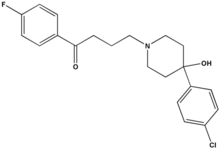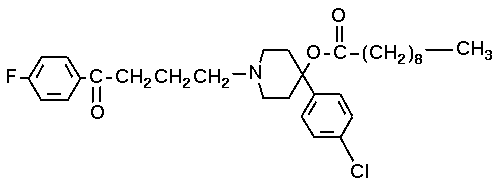ABSTRACT:
During inpatient psychiatric treatment, children with bipolar disorder may present particular management issues. They may experience intense periods of affect regulation that can spiral into frenetic, aggressive behaviors that are difficult to interrupt with de-escalation techniques. This case study presents such a child and the behavior patterns that resulted in seclusion and PRN medication. Also presented is the plan that staff derived which eventually helped this young boy regulate his behavior.
Search terms: Adolescent bipolar disorder, child, child psychiatric hospitalisation, psychosocial treatment
Children with bipolar illness can present particular challenges to the inpatient psychiatric nursing staff. Their episodes of emotional dysregulation are intense and once begun often difficult to interrupt with usual de-escalation techniques. Indeed, their emotional storms may build to the point where they endanger themselves and require a seclusion room until their dysregulation abates. Here we present such a child, his clinical presentation, and management challenges. We begin with our initial interventions, ones that provided only half-solutions to this young boy's intense affect storms, and conclude with a treatment approach that eventually dampened down his intense affects.
Kevin was a 9-year-old boy who arrived at the unit with a history of bipolar disorder for which he had received several years of outpatient treatment. He was admitted to the inpatient program because of his extreme mood lability, aggression, and impulsivity. He exhibited these behaviors both at home and school. His mother stated that she could no longer control his rages at home; the school was also unable to handle his daily outbursts. During the first week on the unit Kevin fell into a pattern. In the morning he was cooperative, interactive, and fairly productive. However, almost every afternoon he would decompensate over a seemingly minor task demand, such as negotiating a social interaction with a peer, transitioning from an activity he enjoyed, or being asked to focus on schoolwork.
These episodes quickly spun out of control. They began with Kevin's frustration and anger followed by an inability to respond to staff's verbal redirection, guidance, or encouragement. Instead, he yelled out and disrupted peers who were attempting to stay on task. Staff's attempts to interrupt the behaviors failed and, as the disruption progressed, Kevin refused to leave the classroom so that he might calm down in his room. He might slide to the floor or glue himself to his chair; trying to move him usually meant at the least escorting him and at the worst, carrying him to the seclusion room. There Kevin often became self-abusive, banging his head, trying to make himself vomit, and voicing his wish to die. Initially he refused an oral PRN (as needed) medication, Zyprexa Zydis 5 mg, and twice required intramuscular injections of Haldol 2 mg. Usually the PRNs helped ease the self-abusive behaviors but most days the angry, loud screaming out would continue for over one hour. At this time Kevin was also taking a standing dose of a mood stabilizer and an atypical antipsychotic that was slowly being increased.
Staff's initial approach to these episodes focused on several interventions. First, staff made every attempt to pattern the behavior and identify the incidents that prompted the episodes of dysregulation. We tried to identify ways to avoid them or interrupt them before they took shape. Kevin was also assigned consistent staff members on each shift in an attempt to build a relationship. His staff member took a supportive approach, monitored his affect very closely, and spent one-on-one positive time with him. We especially tried to schedule the one-on-one time before the afternoon, his difficult time. Knowing that the afternoon was difficult, we reduced stimulation, sitting Kevin at a desk outside the classroom with a staff who attempted to help him complete his schoolwork without any added time limits or quotas. Finally, staff avoided the term and use of the classic "time out," as the very word seemed to enrage him. Instead, when he was becoming tense or frustrated, we suggested that time in his room was needed.
Unfortunately, this initial approach was ineffective. Although Kevin responded very positively to the one-on-one time with staff, he continued to decompensate every afternoon. Each day seemed a familiar scene as he pushed his papers off the desk, tossed counting blocks, threw his pencil across the room, and rolled on the floor refusing to move. Containing the behavior required destimulation in the seclusion room and PRN medications. He did begin to take PRN medication by mouth but unfortunately the episodes continued to last up to 40 minutes, during which Kevin continued to scream out threats and loudly kick the walls.
Kevin's case became the topic of our weekly staff meeting; our initial interventions were reviewed and all new ideas were entertained. Staff had talked with Kevin's mother, whose approach to episodes had been to send him to his room. She then attempted to motivate him with a reminder of an event he was hoping to attend or a TV show he wanted to watch. At this point, several treatment decisions were made. Staff oneon-ones would continue as well as the attempt to "keep the message light" when Kevin had to be re-directed. One staff discussed that by using a motivator of visiting with mom, she had successfully stopped a storm from spinning out-of-control by encouraging him to focus, shift his attention, remember what he wanted (to see his mom), and tell himself he did not have to "slide all the way down."
The basic approach became directed at three interventions: encourage attention shifting, try and introduce a motivator, and remind him that he had controlled his rage in the past week and could do this again. In the last message we were attempting to build Kevin's self-efficacy that he could control his escalating mood. Broadly defined, self-efficacy involves one's beliefs about skills in a particular area and the accompanying expectation that in a given instance, a specific behavior will produce a desired outcome (Bandura, 1977). According to the theory, if based on past experiences, one has come to believe they will succeed at a task or challenge, the individual will be motivated to initiate and persist at the task. In this case, self-efficacy involved the beliefs Kevin held about his ability to regain control of his affects. If with structure, support, and coping techniques the staff could help Kevin succeed in regaining control, his self-efficacy around his ability to control affect storms would increase, which in turn would increase his motivation to persist at the coping skills.
We also had him practice taking a time out during periods when he was feeling cooperative and not angry. Each shift we reviewed his time outs and encouraged him to try and focus on getting moods under control rather than on the negative aspects of the situation. During transitions, which were distressing for Kevin, we attempted to shift his attention toward the next activity. This intervention drew upon concepts of attention shifting and regulation. In this theory, a critical aspect of controlling emotions rests with how much one attends to or shifts attention away from external events and internal sensations that are generating distressing affects (Derryberry & Reed, 1996). Children with regulation problems often have problems shifting attention away from the negative cues related to anger (Posner & Rothbart, 2000). We attempted to teach Kevin how to shift attention and to practice the skill at affect neutral times. He seemed receptive to these ideas and partnered with staff as we attempted to help him get better control of his behavior.
During his last week in the hospital, with the new approach in place, Kevin had only one short trip to the quiet room. He still became frustrated and angry but was able to halt the slide into a full rage. Kevin was also able to shift his attention with some minor verbal cuing from staff. His affect became brighter; he often laughed and became much more productive at school. He even took a few time outs at staff's request, usually for being provocative with peers.
What worked with this young boy? Most likely it was a combination of the medications working to take an edge off the lability combined with a gradual building of self-efficacy as he experienced success in regaining control of his affect. He also displayed increasing ability to shift attention away from negative cues and thoughts. One might credit the improvement to a growing alliance with staff. Also, during Kevin's second week in the milieu, the noise level lowered with the discharge of a very loud young patient. As with most milieu interventions, it is difficult to tease out one single factor that prompted positive change.
The milieu management of the bipolar child is rarely discussed in the literature. Yet such children present particular challenges because of the intensity of their affect storms, which are not amenable to verbal intervention and often escalate into self injurious behavior. Because even minor redirections or requests can prompt such storms it is often impossible to sidestep the situations that prompt the dysregulation. Attempts to keep the child safe while such situations play out often fail because the behaviors escalate to self-injury or attacks on staff. In this instance we seemed to find a combination that worked: attention shifting, building self-efficacy, and practicing alternative coping mechanisms during calmer periods. We welcome feedback on our treatment approach and suggestions of other strategies utilized by staff groups.
References
Bandura, A. (1977). Self-efficacy: Toward a unifying theory of behavioral change. Psychological Bulletin, 84, 191-215.
Derryberry, D., & Reed, M.A. (1996). Regulatory processes and the development of cognitive representations. Development and Psychopathology, 8, 215-234.
Posner, M.I., & Rothbart, M.K. (2000). Developing mechanisms of self-regulation. Development and Psi/clmpnthologt/, 12, 427-411.
Davena Beal, RN, and Kathleen R. Delaney, RN, DNSc
Davena Beal, RN, is a staff nurse, and Kathleen R. Delaney, RN, DNSc, is a clinical nurse coordinator at the Children's lnpatient Unit, Rush University Medical Center, Chicago, Illinois
Author contact: Kathleen_r_delaney@rush.eduReferences, with a copy to the Editor: Poster@uta.edu
Copyright Nursecom, Inc. Jul-Sep 2005
Provided by ProQuest Information and Learning Company. All rights Reserved



